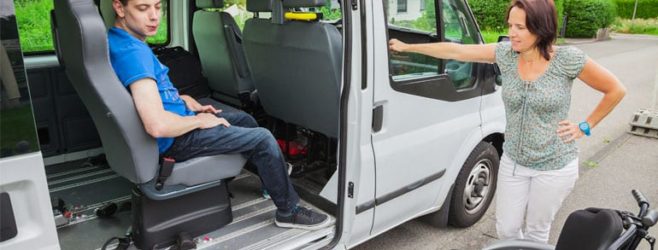With even warmer weather just around the corner, children are getting ready for a summer filled with adventure. This brings parents of children with disabilities to question: Is there fun to be had for my child, too? Can extracurricular activities be life-enhancing even for children with severe birth injuries, such as cerebral palsy?
Cerebral palsy is a non-progressive, neurological condition that develops from injuries sustained before or shortly after birth. A type of damage to the brain, the condition affects a number of nervous system functions such as movement, hearing, vision, cognition, and learning.
Childhood can, therefore, be more limited than that of an able-bodied child, but it needn’t be with the right resources in place. There are several indoor and outdoor activities that teachers can introduce to their classrooms to provide opportunities for independence, self-confidence, entertainment and inclusion. Just as importantly, activities centered on children with cerebral palsy can help develop critical skills for day-to-day life.
1.) Music
Learning to create music is an important part of any child’s growth. Music education is known to improve everything from academic ability to cultural knowledge, discipline, and patience. But the benefits are even more powerful for children with cerebral palsy. To name just a few, music can encourage social skills through group performances, develop vocabulary and vocal ability, improve dexterity needed to play musical instruments, and can even be accompanied by dancing – which has benefits of its own.
2.) Dancing
Dynamic activities like dancing also create a sense of community but, according to research, dancing is much more than social for kids with cerebral palsy. One study compared the results of kinesiotherapy (or movement therapy) and dance. Researchers found that dancing can improve at least seven functions: independence, self-care, mobility, locomotion, communication, psychosocial adjustment, and cognitive ability. If they are able, students could find both physical and mental fulfillment in sharing this experience.
3.) Physical Fitness
Similar to dancing, physical activities can support agility, muscle strength, and overall well-being and health. As a core part of most schools’ curricula, physical education should always involve accessible equipment, facilities, and game rules for children with cerebral palsy: For example, accommodating wheelchair use or coordination difficulties. Modified equipment could include larger and softer balls that are easier to catch, or equipment that is stimulating in color and texture. If these types of items are available, sport and exercises are adaptable to a range of skill and ability levels.
4.) Aquatic Therapy
Pediatric aquatic therapy (also known as water therapy) is not necessarily available at schools, but an important alternative therapy to consider. Aquatic therapy, which performs treatments and exercises in water, is recognized as extremely valuable for children with cerebral palsy. Studies suggest that aquatic therapy is abundant in health-related qualities even for children on low levels of the Gross Motor Function Classification System. They can experience benefits such as reduced tension and pain in joints and muscles, cardiovascular conditioning, better circulation, improved flexibility, and increased endurance.
5.) Arts and Crafts
Drawing, painting, wood carving, paper crafts, sewing, and a myriad of other creative activities bring joy to children of all ages. In children with cerebral palsy, they provide essential opportunities for motor skill development, dexterity, artistic expression, and sense of self. Wherever possible, instilling a sense of creative achievement in a supportive environment can serve as a very effective therapeutic intervention. In fact, as with aquatic therapy, art is a recognized form of treatment.
6.) Field Trips
While field trips or community programs are often geared toward able-bodied children, there are ways to make them accessible to all. Trips to the beach or park, nature walks, bike rides, fishing, and gardening are all great exploratory activities for children who use wheelchairs. But there are certain considerations to keep in mind. For example, it’s wise to avoid sandy beaches or unpaved trails, offer raised gardening boxes designed for wheelchair users, and provide adaptive bikes for cycling.
Always choose activities that each individual would enjoy. It’s important to encourage children with disabilities to participate in activities with their classmates and take advantage of the same opportunities. However, each activity’s various benefits can only materialize if caregivers and teachers invest fully in every student’s confidence and happiness – no matter their ability.



